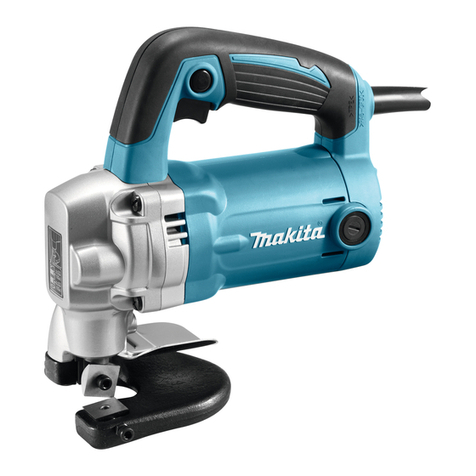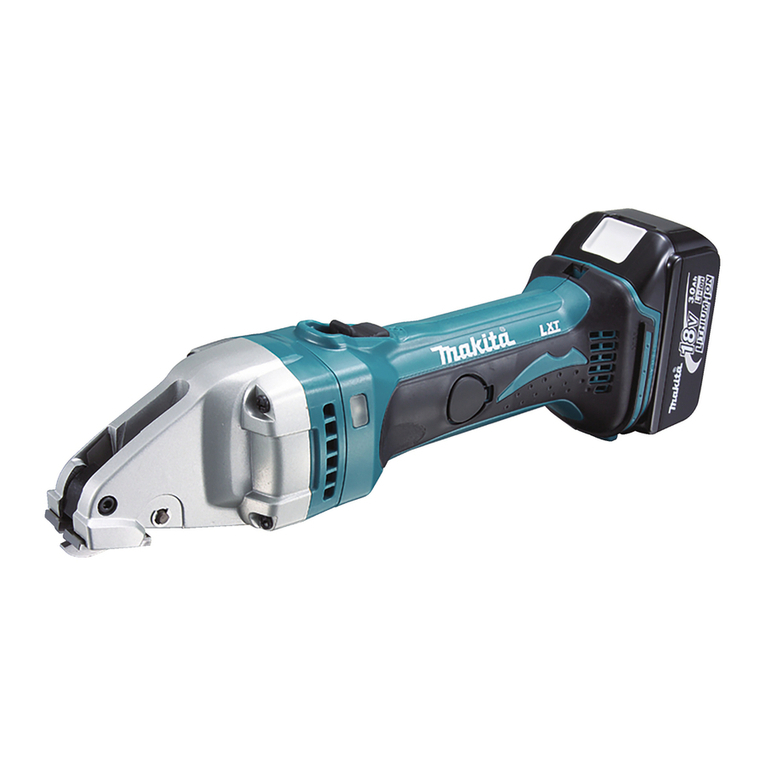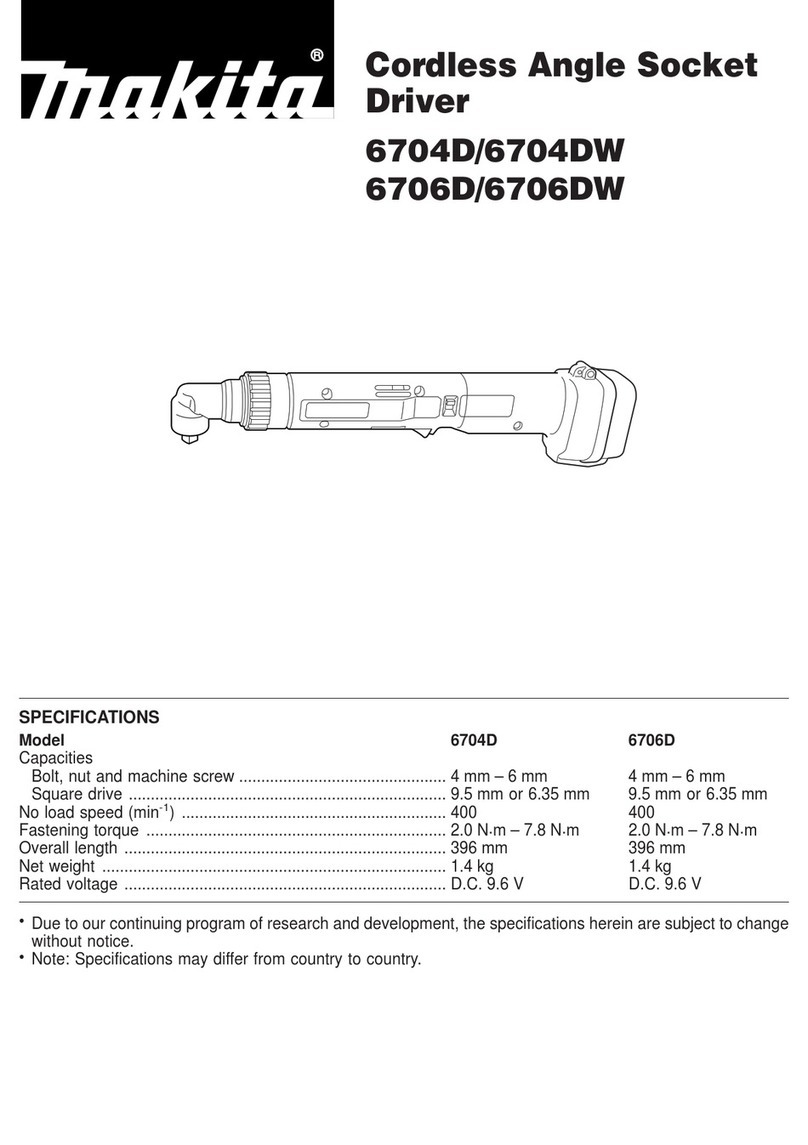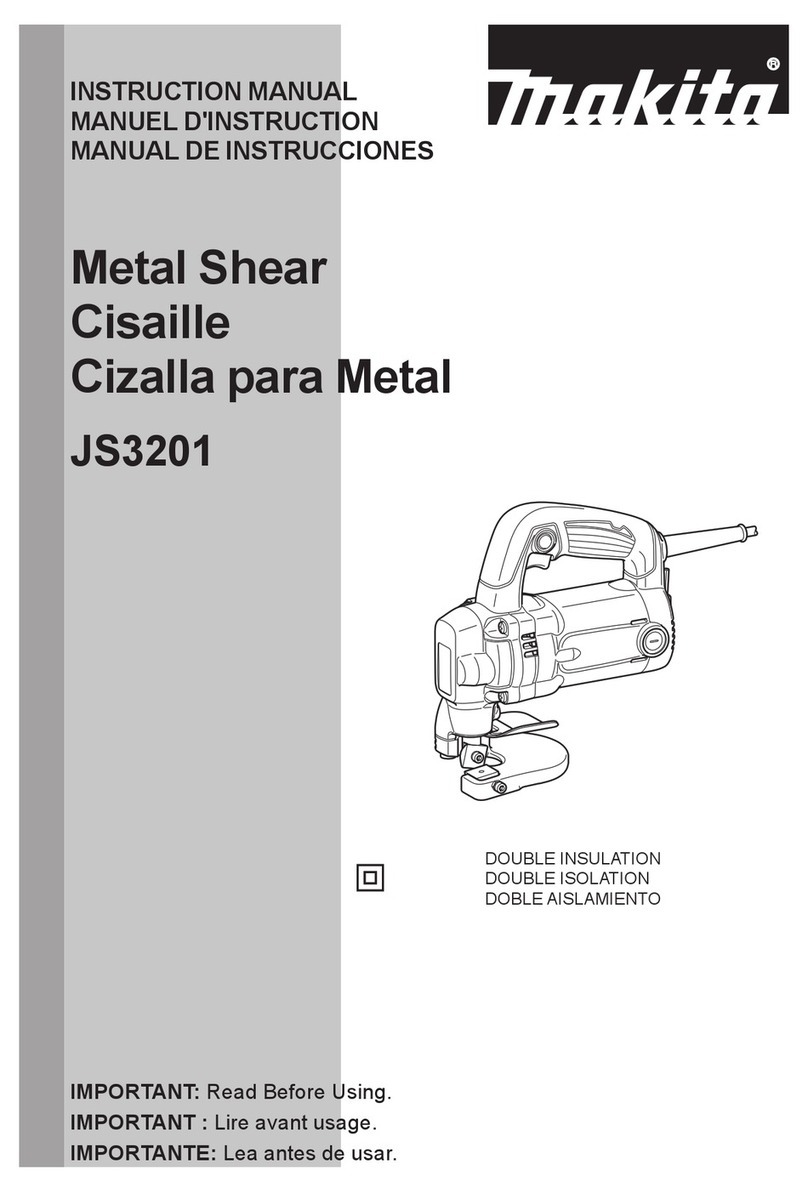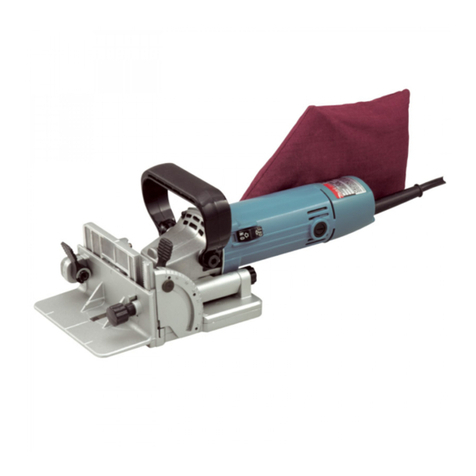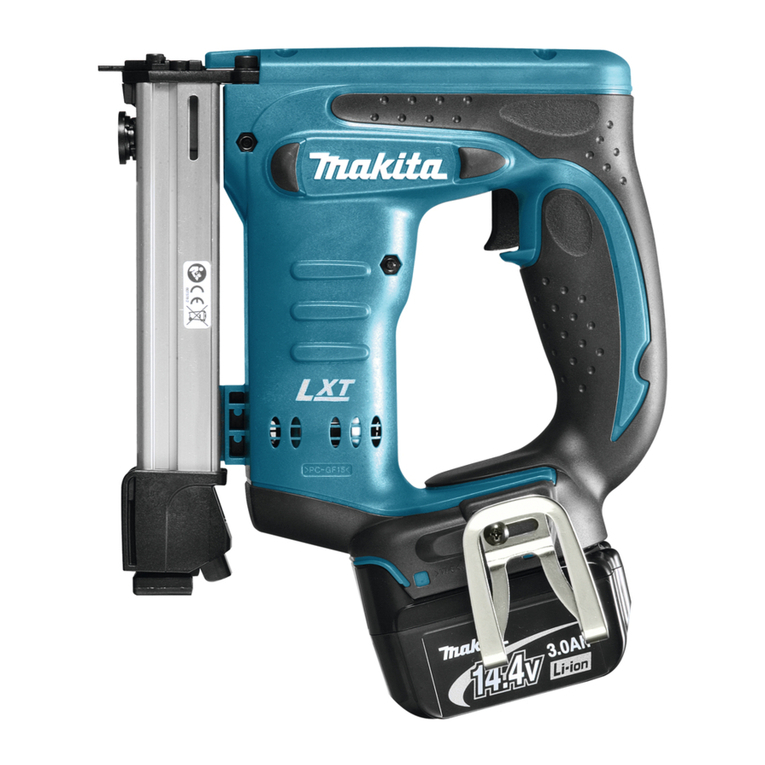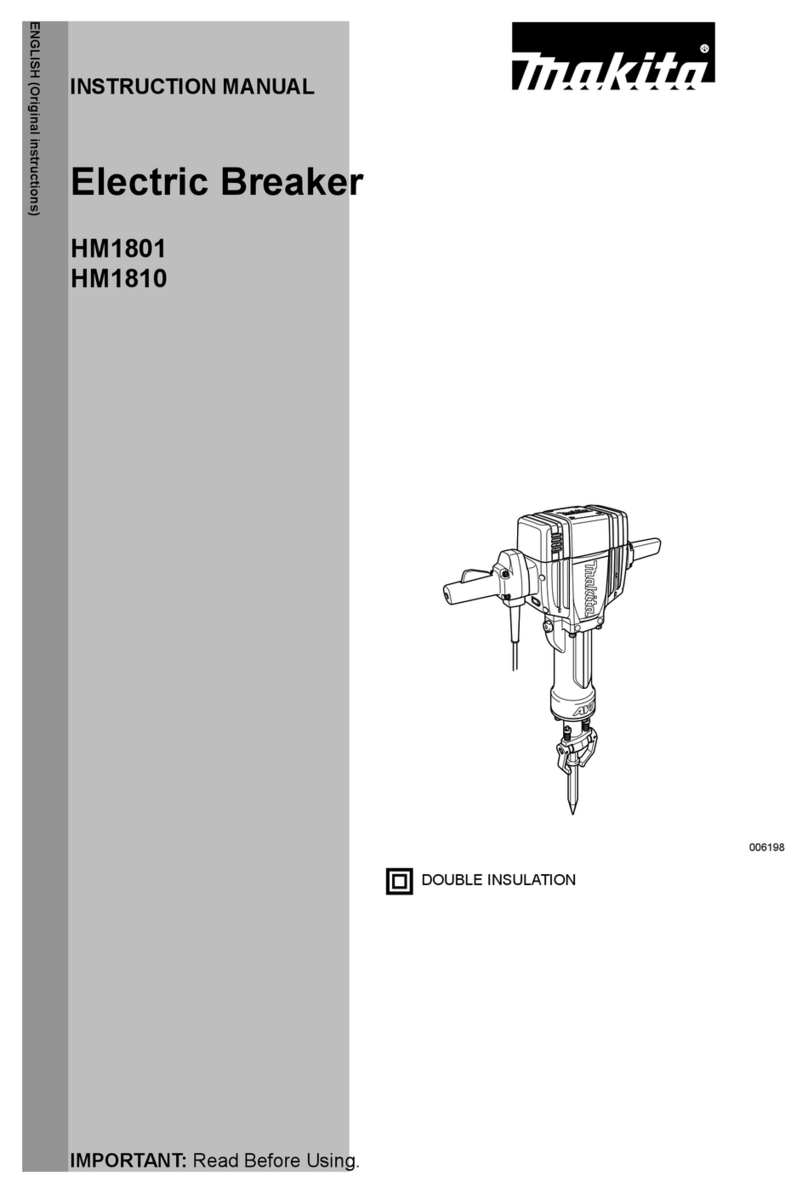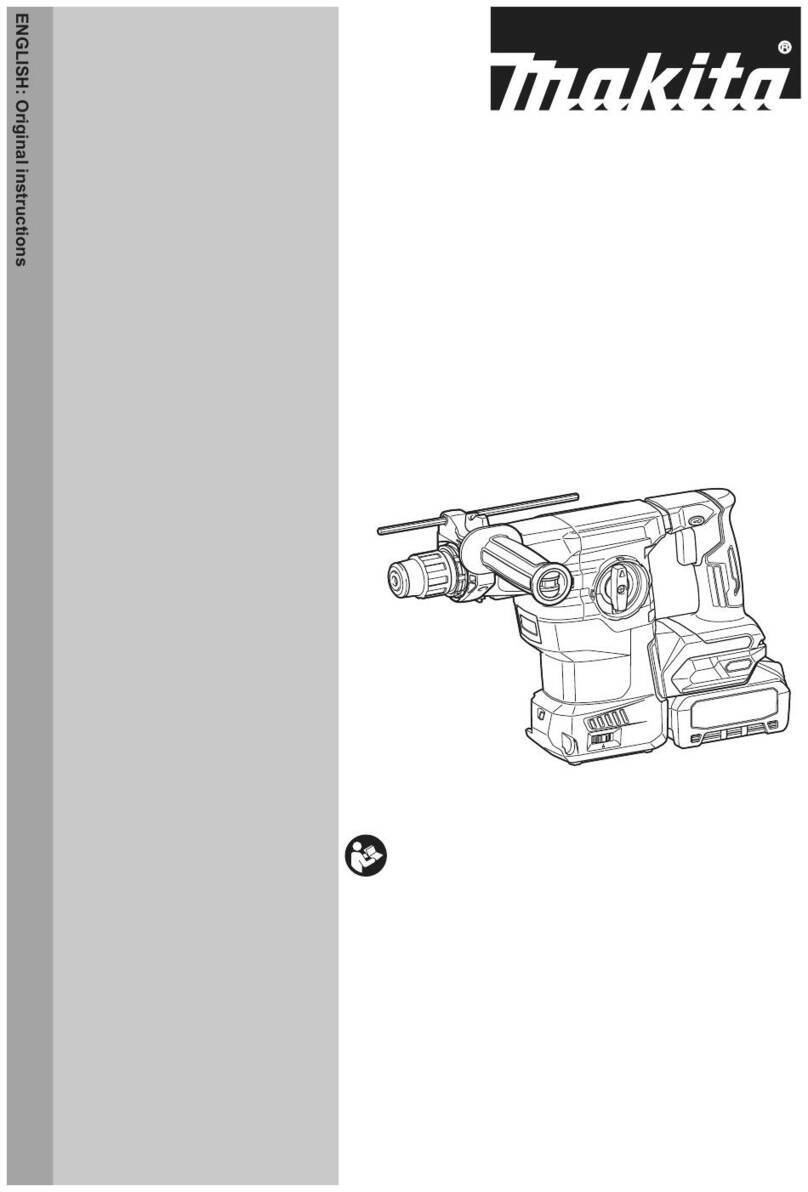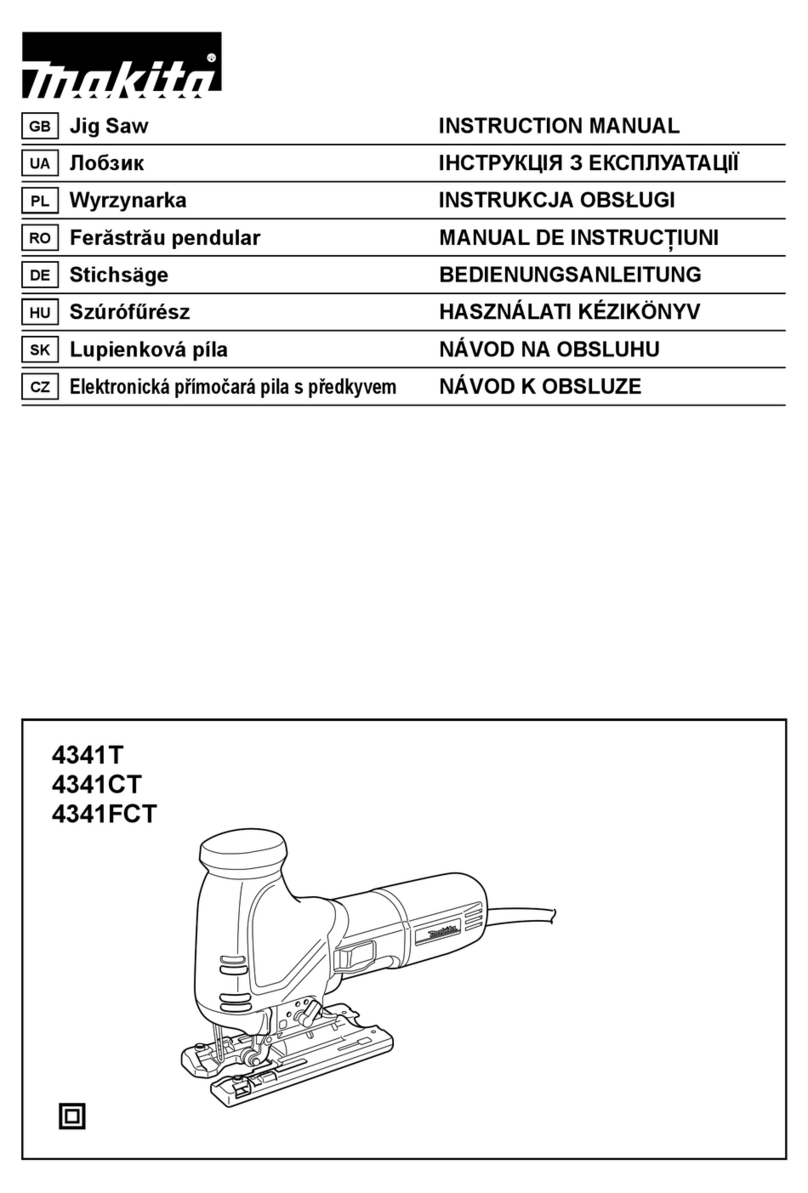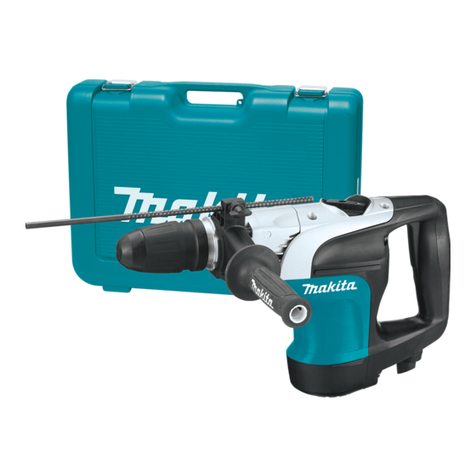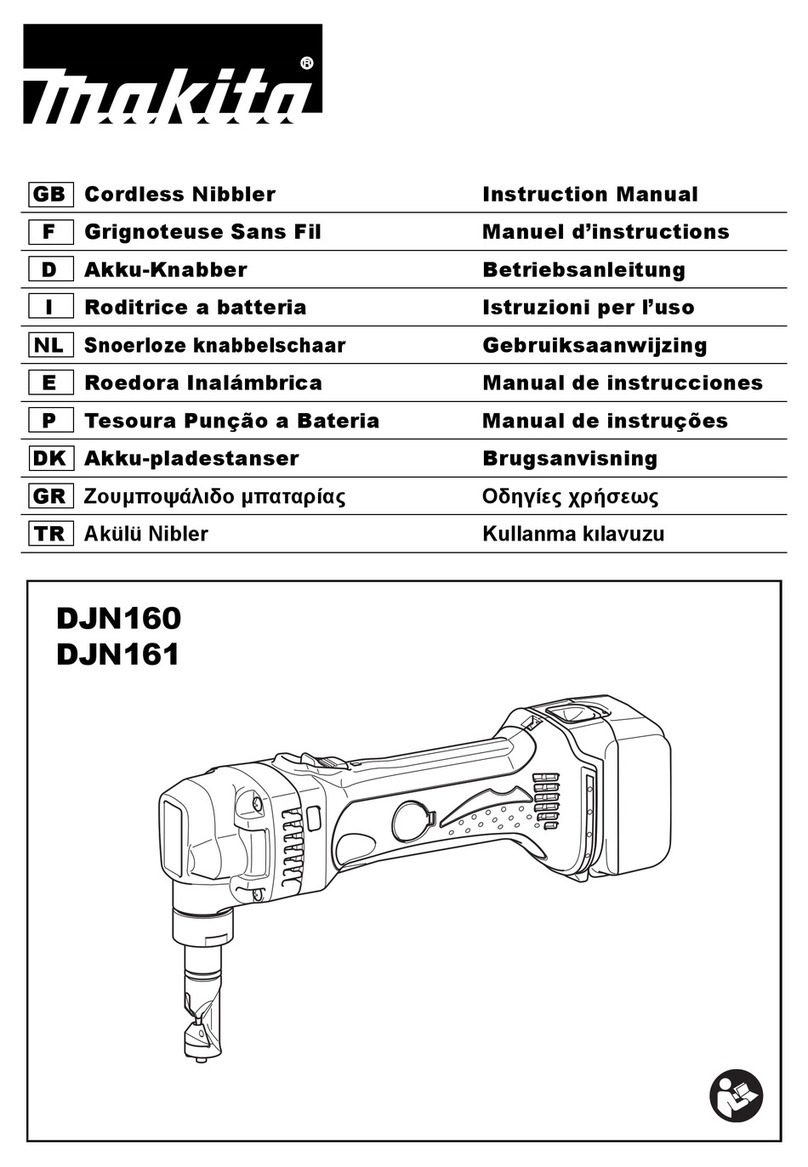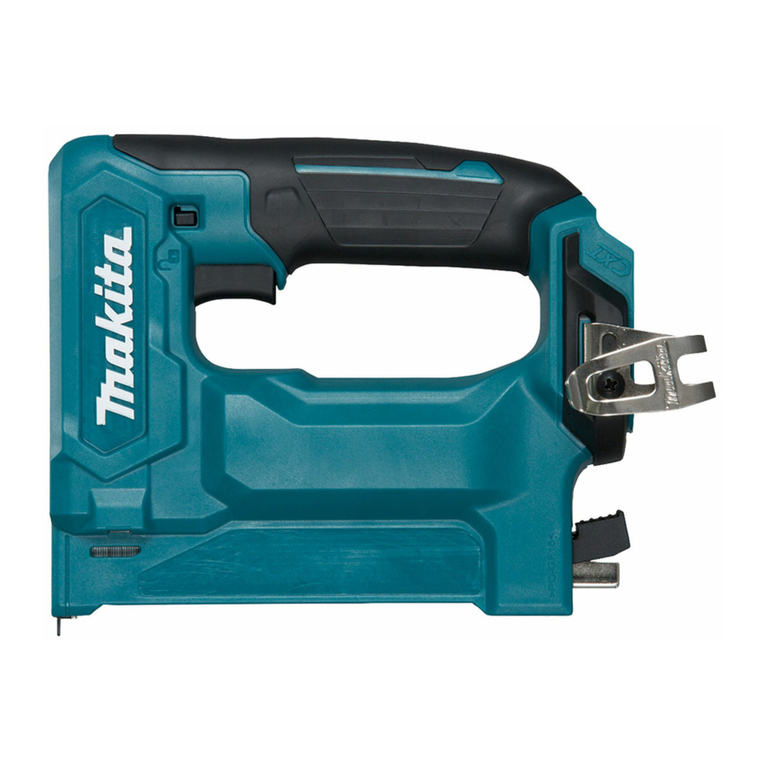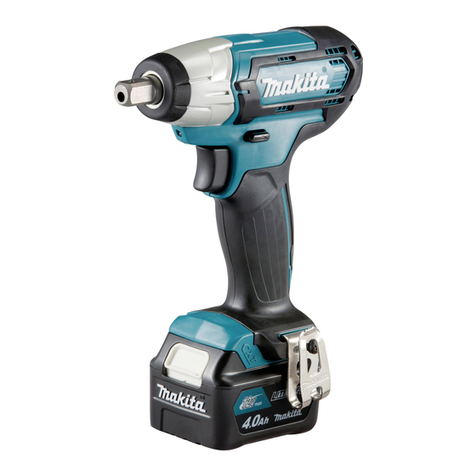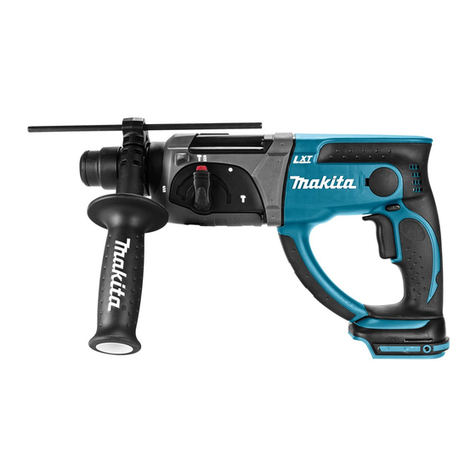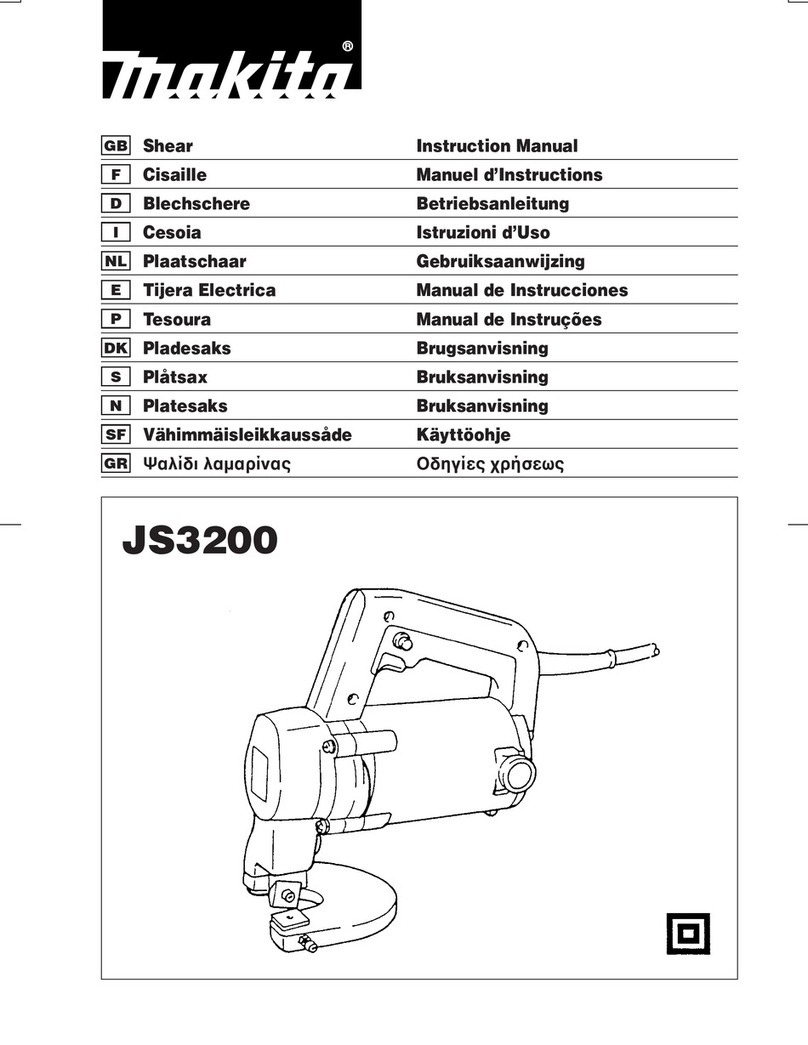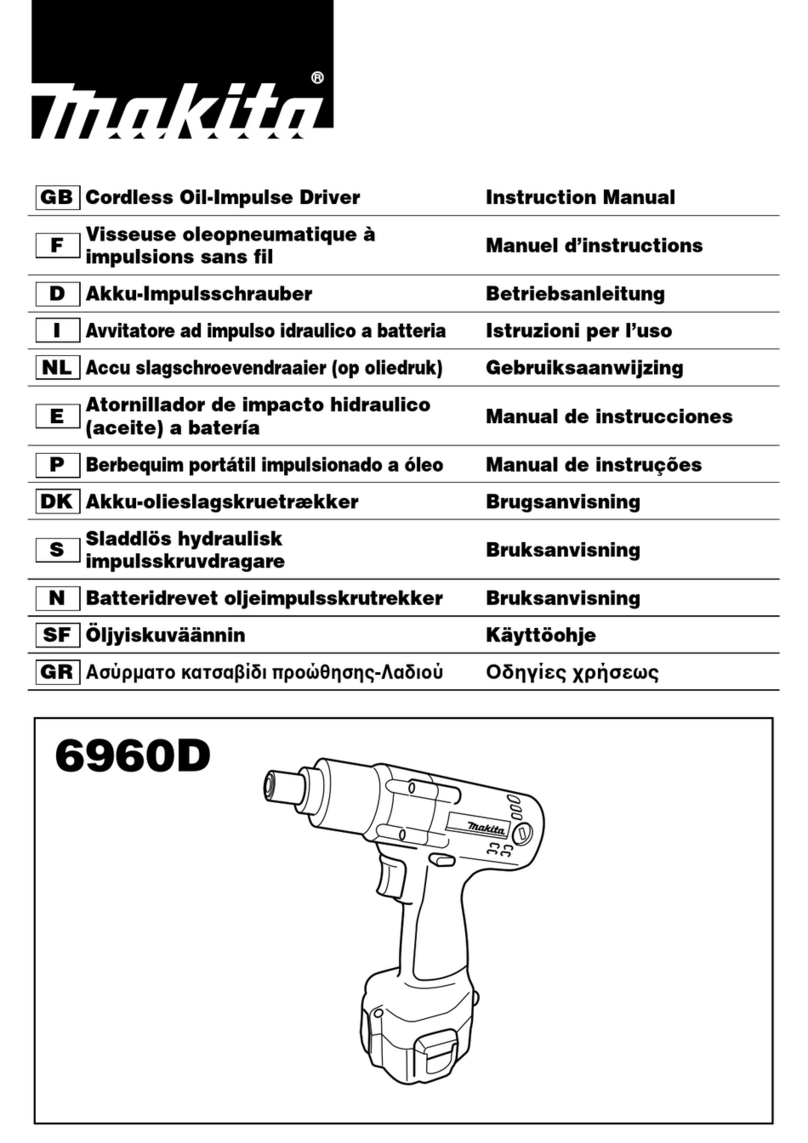6
CAUTION:
Do not tighten the collet nut without inserting a bit, or the
collet cone will break.
Adjusting the depth of cut (Fig. 2, 3 & 4)
Place the tool on a flat surface. Loosen the screw secur-
ing the stopper pole.
Loosen the lock lever and lower the tool body until the bit
just touches the flat surface. Tighten the lock lever to lock
the tool body.
Next, lower the stopper pole until it makes contact with
the adjusting hex bolt. Align the depth pointer with the “0”
graduation.
Raise the stopper pole until the desired depth of cut is
obtained. The depth of cut is indicated on the scale
(1 mm or 1/16” per graduation) by the depth pointer.
Then tighten the screw to secure the stopper pole.
Now, your predetermined depth of cut can be obtained by
loosening the lock lever and then lowering the tool body
until the stopper pole makes contact with the adjusting
hex bolt.
CAUTION:
Since excessive cutting may cause overload of the motor
or difficulty in controlling the tool, the depth of cut should
not be more than 15 mm at a pass when cutting grooves
with an 8 mm diameter bit.
[Note: When cutting grooves with a 20 mm diameter bit,
the depth of cut should not be more than 5 mm at a
pass.] When you wish to cut grooves more than 15 mm
deep with an 8 mm diameter bit or more than 5 mm deep
with a 20 mm diameter bit, make several passes with
progressively deeper bit settings.
Stopper block (Fig. 5)
The stopper block has three adjusting hex bolts which
raise or lower 0.8 mm per turn. You can easily obtain
three different depths of cut using these adjusting hex
bolts without readjusting the stopper pole.
Adjust the lowest hex bolt to obtain the deepest depth of
cut, following the method of “Adjusting depth of cut”.
Adjust the two remaining hex bolts to obtain shallower
depths of cut. The differences in height of these hex bolts
are equal to the differences in depths of cut. To adjust the
hex bolts, first loosen the hex nuts on the hex bolts with
the wrench and then turn the hex bolts. After obtaining
the desired position, tighten the hex nuts while holding
the hex bolts in that desired position. The stopper block is
also convenient for making three passes with progres-
sively deeper bit settings when cutting deep grooves.
CAUTION:
When using a bit having total length of 60 mm or more, or
edge length of 35 mm or more, the depth of cut cannot
be adjusted as previously mentioned. To adjust, proceed
as follows:
Loosen the lock lever and carefully adjust bit protrusion
below the tool base to the desired depth of cut by moving
the tool body up or down. Then re-tighten the lock lever
to lock the tool body at that depth of cut. Keep the tool
body locked at this position during use. Since the bit
always protrudes from the tool base, be careful when
handling the tool.
Adjusting the lock lever (Fig. 6)
The locked position of the lock lever is adjustable. To
adjust it, loosen the lock lever 3/4 turn and press the cen-
ter of the lock lever. The hex nut will come out. Set the
hex nut to the desired position and tighten the lock lever.
Switch action (Fig. 7)
CAUTION:
Before plugging in the tool, always check to see that the
switch trigger actuates properly and returns to the “OFF”
position when released.
To start the tool, simply pull the trigger. Release the trig-
ger to stop.
Operation (Fig. 8)
• Set the tool base on the workpiece to be cut without the
bit making any contact. Then turn the tool on and wait
until the bit attains full speed. Lower the tool body and
move the tool forward over the workpiece surface,
keeping the tool base flush and advancing smoothly
until the cutting is complete.
• When doing edge cutting, the workpiece surface
should be on the left side of the bit in the feed direction.
NOTE:
• Moving the tool forward too fast may cause a poor qual-
ity of cut, or damage to the bit or motor. Moving the tool
forward too slowly may burn and mar the cut. The
proper feed rate will depend on the bit size, the kind of
workpiece and depth of cut. Before beginning the cut
on the actual workpiece, it is advisable to make a sam-
ple cut on a piece of scrap lumber. This will show
exactly how the cut will look as well as enable you to
check dimensions.
• When using the straight guide, be sure to install it on
the right side in the feed direction. This will help to keep
it flush with the side of the workpiece.
Straight guide (Fig. 9, 10 & 11)
The straight guide is effectively used for straight cuts
when chamfering or grooving.
To install the straight guide, insert the guide bars into the
holes in the tool base. Adjust the distance between the
bit and the straight guide. At the desired distance, tighten
the wing bolts to secure the straight guide in place.
When cutting, move the tool with the straight guide flush
with the side of the workpiece.
If the distance (A) between the side of the workpiece and
the cutting position is too wide for the straight guide, or if
the side of the workpiece is not straight, the straight
guide cannot be used. In this case, firmly clamp a
straight board to the workpiece and use it as a guide
against the router base. Feed the tool in the direction of
the arrow.
Templet guide (optional accessory)
(Fig. 12, 13 & 14)
The templet guide provides a sleeve through which the
bit passes, allowing use of the router with templet pat-
terns.
To install the templet guide, loosen the screws on the tool
base, insert the templet guide and then tighten the
screws.
Secure the templet to the workpiece. Place the tool on
the templet and move the tool with the templet guide slid-
ing along the side of the templet.

